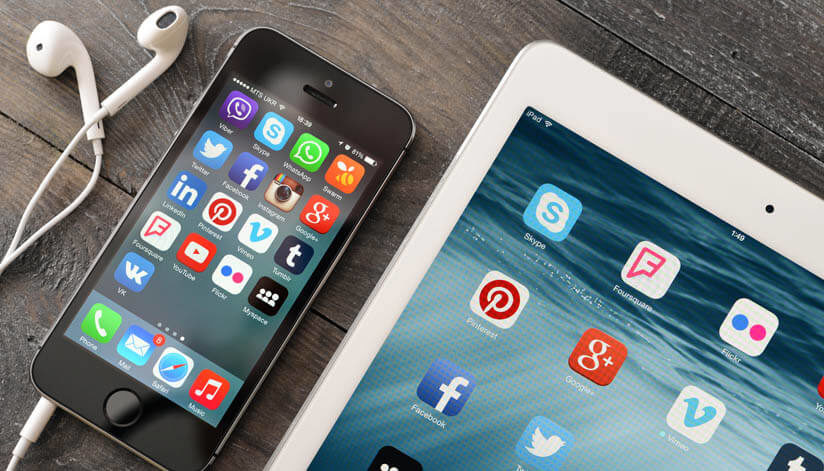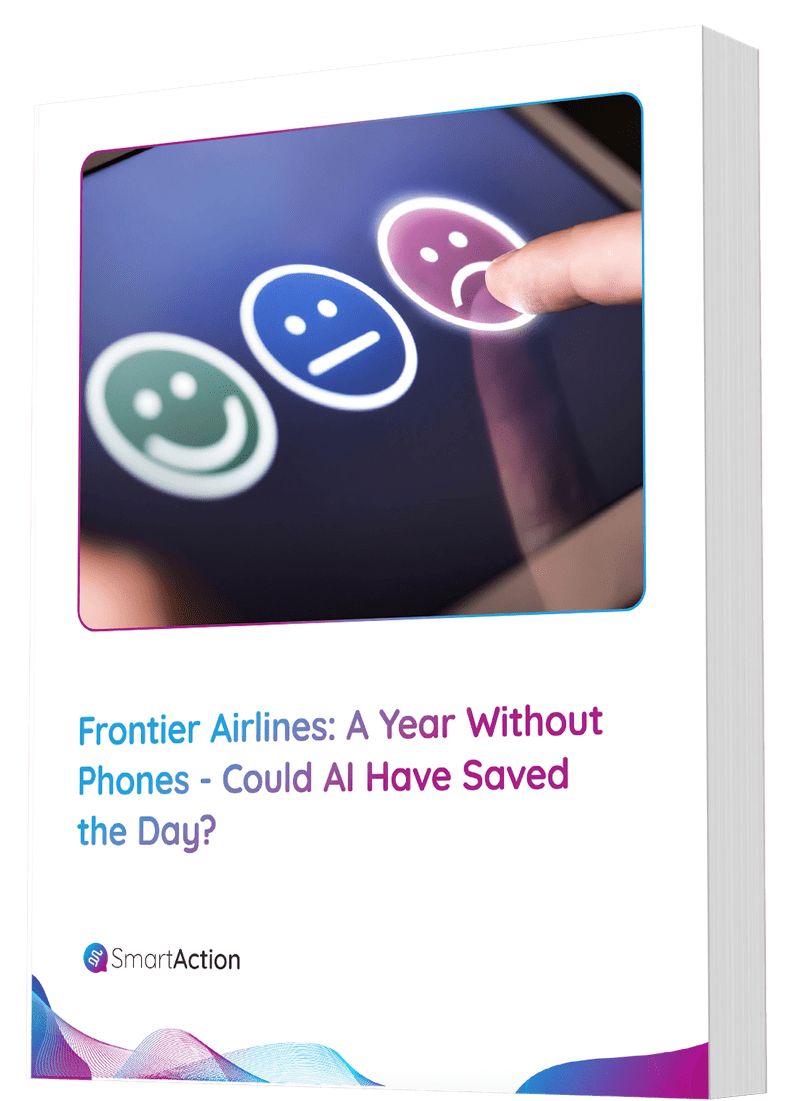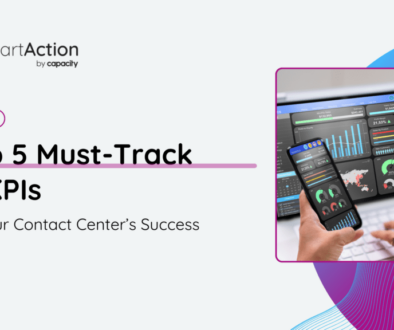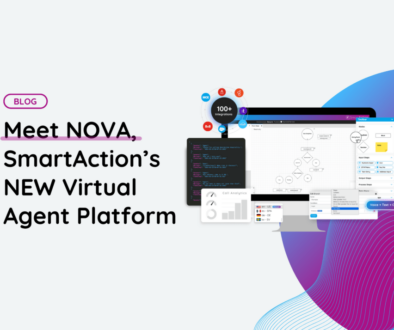How Demographics Affect AI Chatbot Usage
AI chatbots for customer service are on the rise – and it’s all thanks to the advancements in technology and natural language processing. In fact, over 80% of businesses are striving to implement AI chatbots into their contact centers by 2020. These automated helpers (if implemented and integrated correctly) can make things easier for businesses and customers alike, by changing the ways customers interact with businesses to get the products and services they require.
However, a successful AI chatbot implementation comes with its own challenges. There’s a striking contrast between different generations and the way they interact with technology, and companies that don’t recognize this are not as likely to succeed with their natural language chatbot application. You should be able to identify the channels that your customer base are using, in order to accommodate their needs and preferences. For example, millennials are more likely to use text-based channels of communication, while older generations prefer phone and email conversations.
Knowing your demographic and the methods in which they’re more likely to interact with customer support is one of the first of many building blocks that your company can use to make chatbot implementation a much smoother and successful process. Keep in mind that this knowledge doesn’t just apply to new chatbots – businesses with existing chatbots should also identify who they’re targeting and which channels their customers prefer.
Let’s break it down a little further:
Millennials typically prefer text or social media.
They’re technology natives, so it’s no surprise that millennials are one of the most tech-savvy generations ever. Over 94% of Americans between the ages of 18-29 own a smartphone, which means that extensive forms of communication are at their fingertips and are easily accessible at all times. This generation sparked the growth of messaging apps and social media, so this has influenced the way they communicate and has changed their expectations for customer self-service. They are more likely to use automated customer service options, as being around technology has made millennials more accustomed to instant gratification and fast responses – making AI chatbots an excellent solution for their simple, repetitive problems.
Older generations are quickly adopting newer forms of communication.
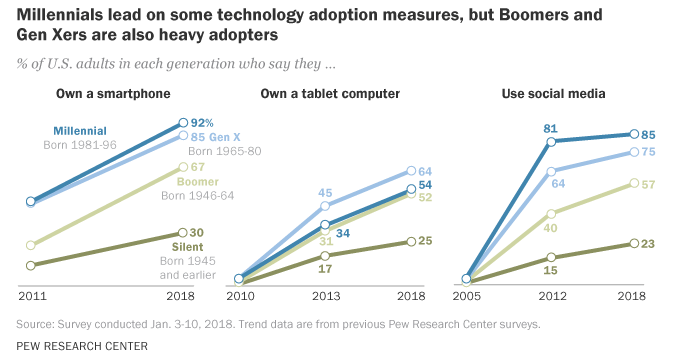
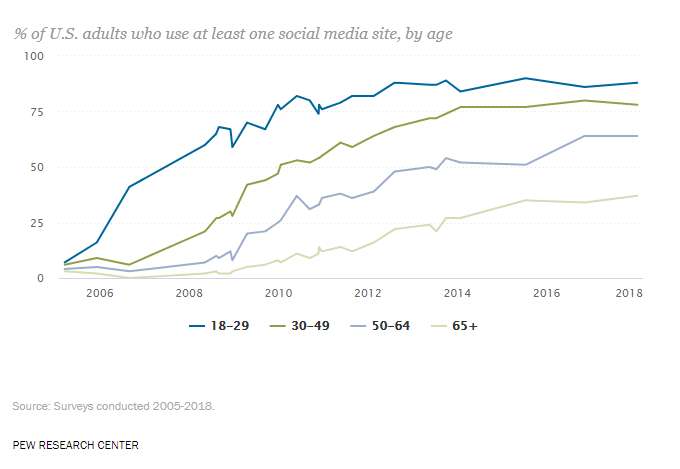
While millennials generally lean towards texting and instant messaging, older generations favor emails and phone conversations for communication. However, they are also adopting other methods of communication at a fast pace. The graphics above show the rate of adoption for various technologies and social media. While the younger generations are early adopters, the older generations will catch on faster and faster as they continue to expand their experiences with the many newer communication channels. As such, they have already begun to utilize instant messaging and SMS regularly, giving companies a greater number of ways to communicate effectively with this consumer group. With that being said, the phone channel is still important to the overall strategy (and continues to grow in contact center volume), so it’s best to continue making improvements with natural language IVR or other call center automation, as well.
In the case of AI chatbots, older generations are less likely to expect automated customer service. However, it can often come as a pleasant surprise when they are able to receive fast and accurate assistance and can reliably use a chatbot to help them resolve their issues. But the bot has to work and be easy to use – these are factors that differentiate your company’s customer service and sets your brand apart from your competitors.
Tell your customers about the new AI chatbot!
Identifying the best channel of communication between your company and your customers can also inform how you introduce the new chatbot option to them. Think of it as a way to educate your customers about your new self-service offering and the many different features it has (confirming appointments, making recurring payments, making an insurance claim, etc.). This introduction can be done through an informative email, an SMS text notification, or social media platform. As a matter of fact, we recommend using all three to make sure you hit every customers’ preferred channel.
Doing thorough research on your target market can help you decide whether to deploy chatbot via SMS text, Facebook Messenger, Skype, or through messaging apps. With that being said, it’s best to incorporate an omnichannel approach, which involves a seamless transition between a variety of channels and can satisfy a wide range of demographics. For a deeper dive into other ways to deploy a successful AI chatbot, check out our whitepaper or contact us to get started!

